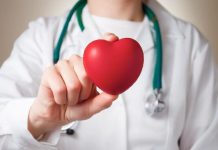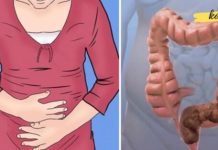First Aid for Myocardial Infarction — Everyone Should Know This!

A myocardial infarction, commonly known as a heart attack, is the death (necrosis) of a portion of the heart muscle. It occurs when the flow of blood to that part of the heart is suddenly blocked, usually due to atherosclerosis (hardening and narrowing of the coronary arteries), a spasm of those vessels, or a blood clot that prevents oxygen from reaching the tissue.
When a heart attack occurs, the affected part of the heart muscle stops receiving oxygen. Within minutes, the muscle cells begin to die, and irreversible damage develops. As a result, the heart’s ability to pump blood efficiently is compromised. Severe complications may include acute heart failure, pulmonary edema (fluid buildup in the lungs), and ventricular fibrillation, a life-threatening condition where the heart’s muscle fibers contract chaotically instead of rhythmically.
After a heart attack, the dead heart cells are gradually replaced by scar tissue. Unlike healthy muscle, scar tissue cannot contract. This makes the heart more vulnerable to stress and increases the likelihood of future complications such as arrhythmias, angina pectoris, and recurrent heart attacks.
Recognizing the Symptoms of a Heart Attack
Early recognition can save a life. The classic symptoms of a myocardial infarction are:
Severe, crushing, or constricting chest pain located behind the breastbone (sternum). The pain may radiate to the back, shoulders, arms, neck, or jaw.
The pain usually lasts more than 15 minutes and does not subside after taking nitroglycerin or resting.
The person may appear pale, sweaty, and weak.
Pulse and breathing become faster and shallower.
A sense of fear or impending doom often accompanies the episode.
It is important to note that heart attack symptoms in women can be atypical. Instead of the characteristic crushing chest pain, they may experience:
Shortness of breath or a feeling of tightness in the chest;
Discomfort in the upper abdomen;
Nausea, indigestion, or a burning sensation;
Fatigue or dizziness.
Because these symptoms can easily be mistaken for less serious conditions, women are sometimes slower to seek help, which increases their risk of serious complications.
Why Quick Action Matters
A heart attack is a medical emergency. Approximately 40% of patients die before reaching the hospital, often because they or their companions did not recognize the danger in time. Every minute counts. The sooner medical assistance is provided, the greater the chance of survival and recovery.
Doctors emphasize remembering three key warning signs:
Persistent or severe chest pain lasting longer than 15 minutes;
Shortness of breath or excessive sweating;
Weakness, paleness, or fear of death.
If these signs appear, do not wait to see if they go away — call emergency services immediately.
First Aid Before the Ambulance Arrives
While waiting for professional help, taking the right actions can make the difference between life and death. Here’s what to do:
Keep the person calm and seated.
Help them sit in a comfortable, half-reclined position. Avoid lying them completely flat, as this can make breathing more difficult. Loosen tight clothing, especially around the neck and chest, and open windows to provide fresh air.
Administer nitroglycerin.
Place one tablet of nitroglycerin under the tongue (if the person has been prescribed it). The medicine helps dilate blood vessels and may relieve pain. The dose can be repeated every five minutes, but no more than three times in total.
Give aspirin if available.
Have the person chew one tablet of aspirin (about 300 mg). Chewing allows faster absorption and helps prevent further blood clotting in the arteries. This simple step alone can significantly reduce the extent of heart damage.
Monitor blood pressure and pulse.
If you have a blood pressure monitor, check the readings. If the blood pressure is too high, follow any previously prescribed steps to lower it — but avoid giving unprescribed medication.
Stay with the person.
Never leave a heart attack victim alone. Continue to monitor their breathing and pulse. If they lose consciousness or stop breathing, begin cardiopulmonary resuscitation (CPR) immediately until medical professionals arrive.
The Importance of Timely Medical Care
According to clinical statistics, about 30% of heart attack survivors who delay seeking help die within the first year after the incident due to complications or recurrence. However, when treatment begins quickly — ideally within the first hour — the risk of death can drop by up to 80%.
Modern treatments, including medications that dissolve blood clots (thrombolytics) and surgical procedures such as angioplasty, can restore blood flow to the heart and minimize damage. But these methods are only effective if the patient receives care promptly.
Reducing the Risk of a Heart Attack
While knowing first aid is crucial, prevention remains the best medicine. You can significantly lower your risk of myocardial infarction by:
Maintaining a healthy diet low in saturated fats, sugar, and salt;
Exercising regularly to strengthen the heart and improve circulation;
Avoiding smoking and limiting alcohol consumption;
Managing stress through relaxation techniques or meditation;
Monitoring blood pressure, cholesterol, and blood sugar levels regularly;
Following your doctor’s recommendations if you have cardiovascular disease or diabetes.
Even small lifestyle changes can dramatically reduce the likelihood of a heart attack and improve overall quality of life.












